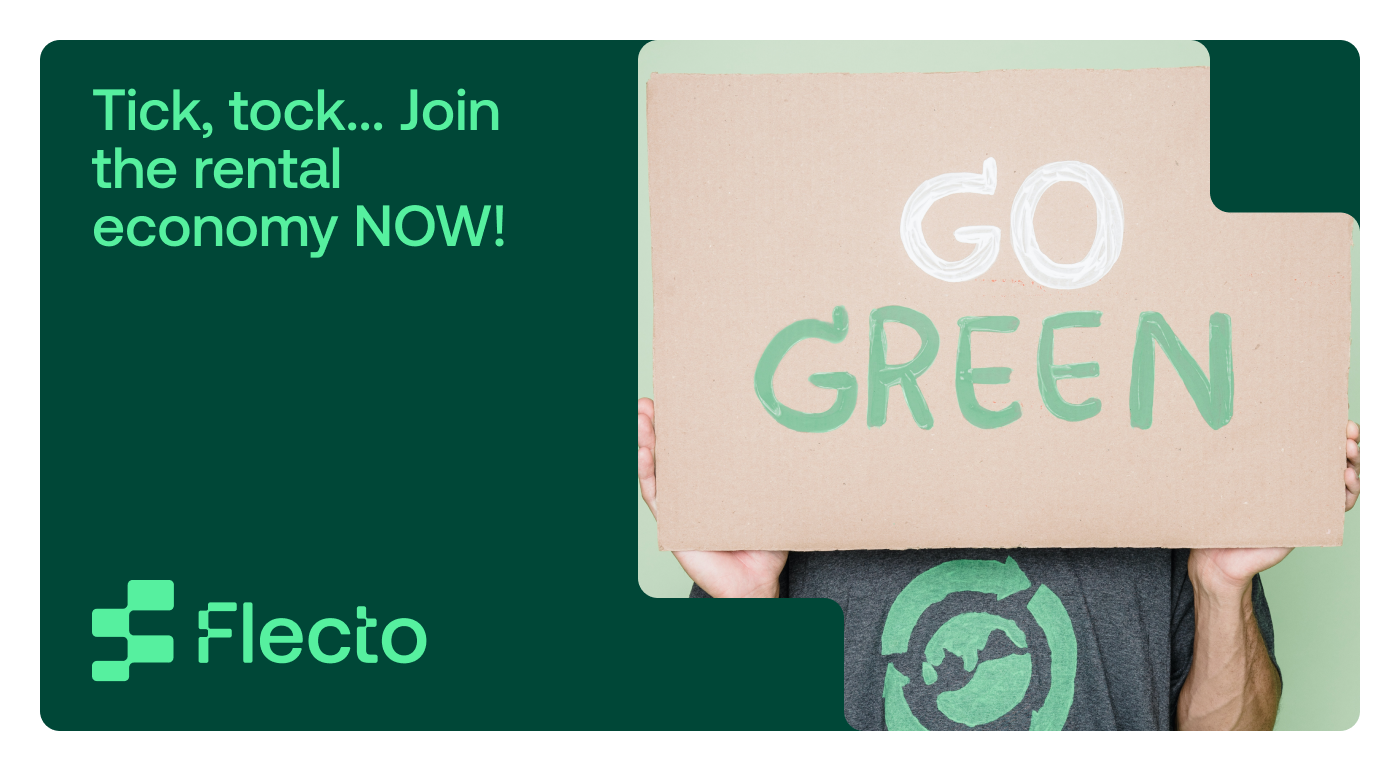The time to enter the rental economy is NOW!

As a consumer, you are most likely already part of the rental economy. When you go on a vacation and decide to rent a car to go sightseeing, there it is. When you borrow a photo or video camera so you can take care of a film project, there it is again. Even back in the old days, when we used to rent DVDs to watch at home for a few days — that was the rental economy. It is all around us, whether we see it or not.
With increasing challenges such as global warming, deforestation, and overconsumption, customers today are ever so concerned on how their consumer habits can help protect the environment and biodiversity. In fact, according to the ‘Buying Greens Report’ from Trivium Packaging, a global provider for recyclable metal packaging, 67% of the end-consumers consider themselves to be ‘environmentally aware’, while 73% are willing to pay more for sustainable packaging.
But how does this work exactly? By renting products and then returning them, you are basically extending their life cycle and enabling a lot more usage. This means less products are manufactured and less resources are needed, thus reducing both the waste of items that are probably good-as-new as well as harmful emissions of CO2.
The environmental benefits of a rental economy are outstanding, but they also take on a new form of consumption that is gaining momentum. Customers are consolidating a rent-before-you-buy model for two fundamental reasons: either to test the product before purchasing it or to fulfill short-term needs without having to spend a lot of money.
How the industry is changing
A circular economy model has businesses and retailers looking at rentals as a newfound, efficient source of revenue. The ‘Future of Retail’ report, crafted by JLL back in 2019, concluded how generations are unhappy with the amount of consumer waste, thus becoming increasingly interested in product sustainability and minimizing carbon footprint. According to it, 57.3% of all consumers are willing to rent, rather than buy, if products are “well-made and trendy”, while the number goes up to 70% for millennials and Generation Z.
Newer generations find themselves wanting to utilize products without having to commit to them, favoring an access-over-ownership model that is good enough to fulfill short-term needs. This means the most rented products can usually range all the way from photo equipment and mechanical tools down to vehicles and home appliances.
Naturally, technology has also played a crucial role in the advancement of rental businesses. In the old days, different tools and methods were needed to manage the A to Z of a rental enterprise: inventory was managed one way, client database and communication the other, and so on. Recent development in software has allowed new platforms to emerge that take care of the rental experience with as much flexibility and easiness as possible, both on the business side as well as the customer one.
As the rental economy seems to be taking off, now is the time for businesses and retailers worldwide to join the movement. This new economic model has proven to be sustainable and flexible while empowering new sales channels and keeping revenue flowing. Enabling a rental model is not only a staggering way for companies to be more environmentally responsible but also a strategic technique to get closer to a new generation of customers as consumer behavior transforms.